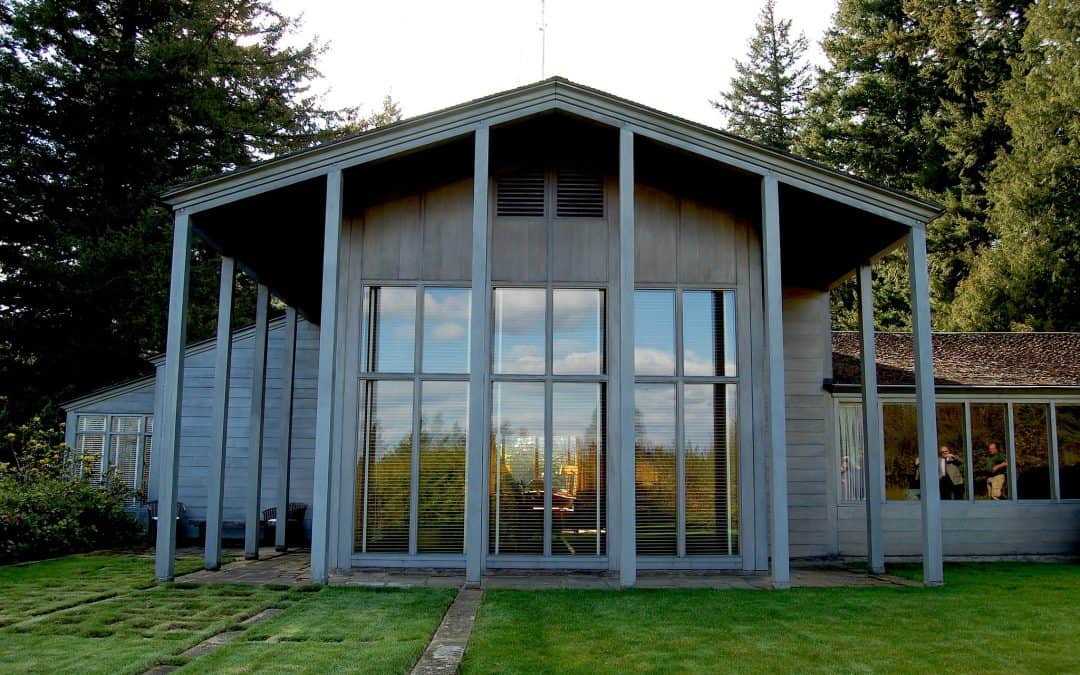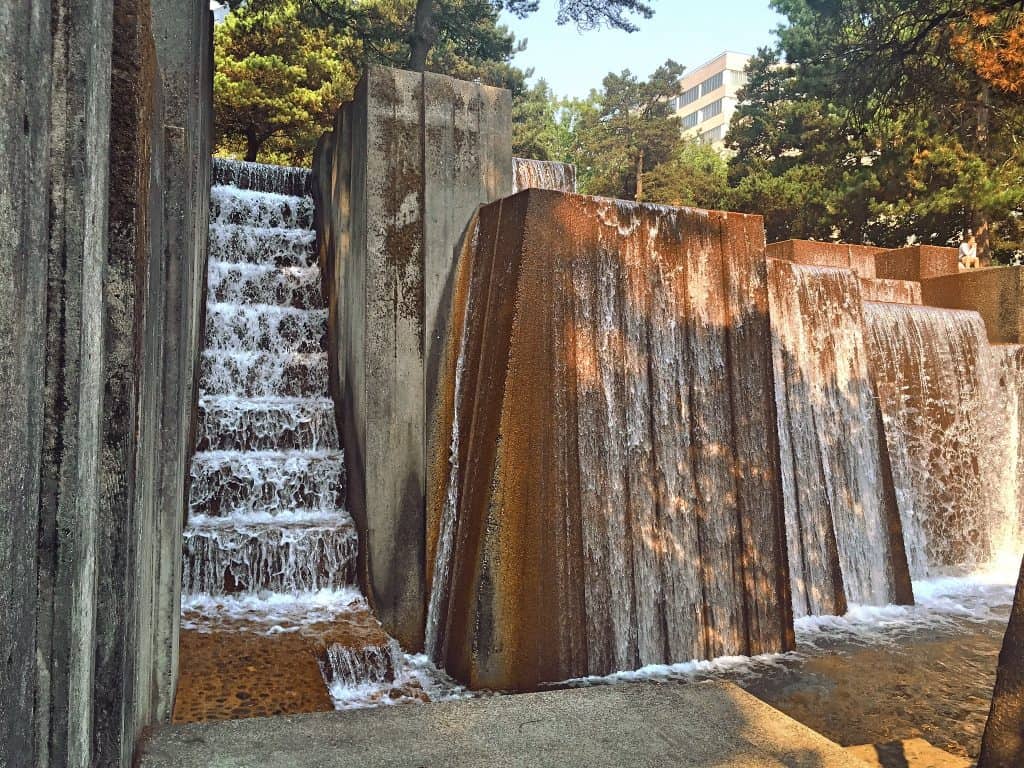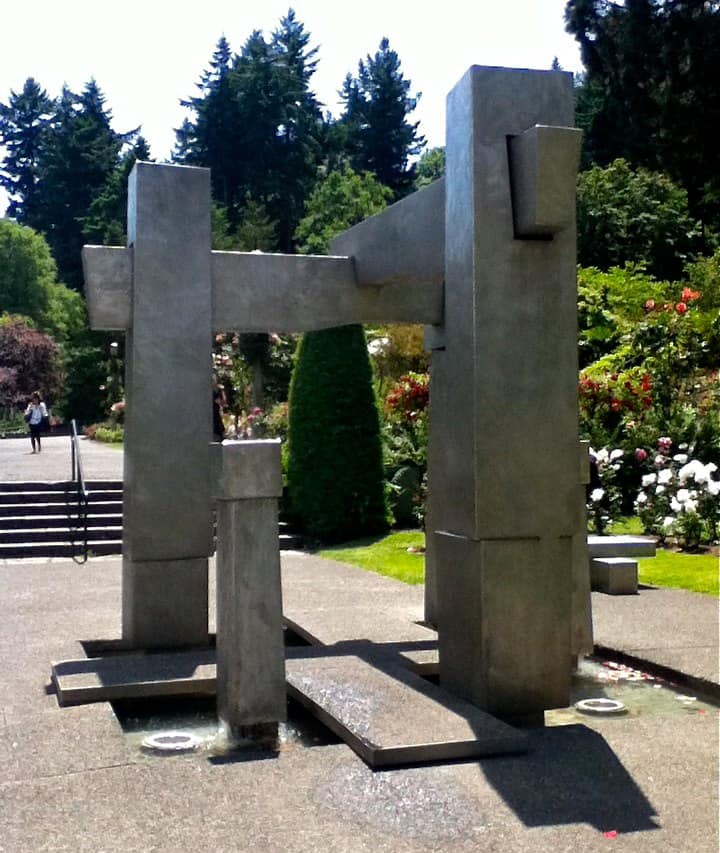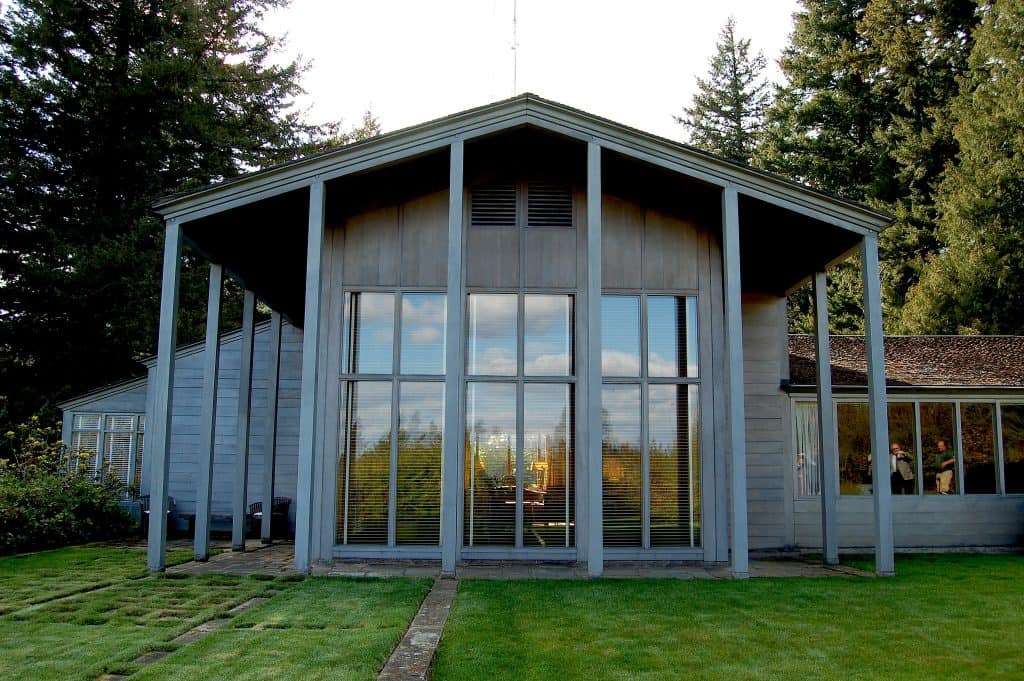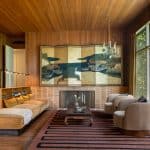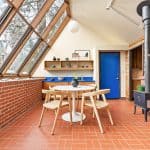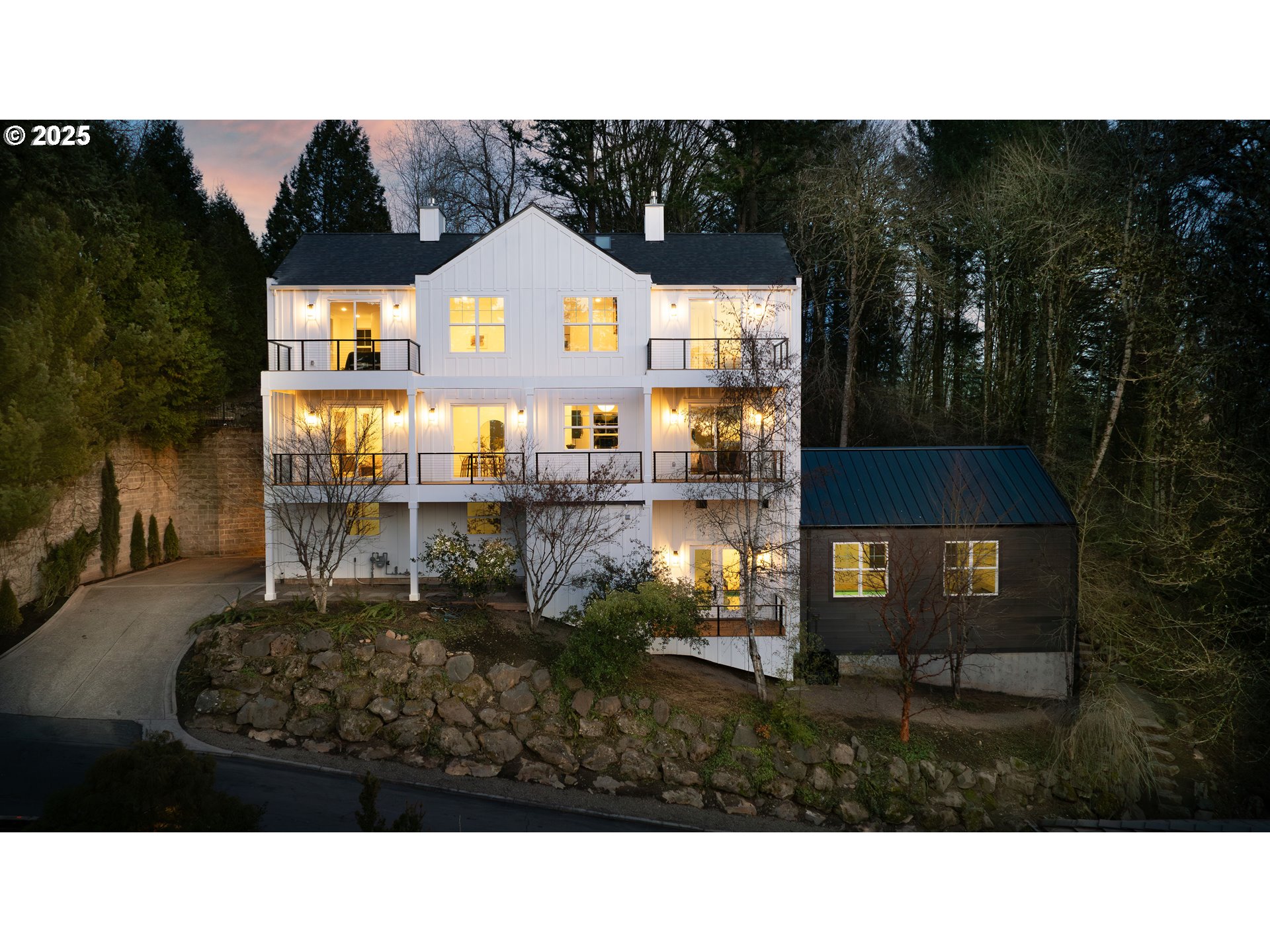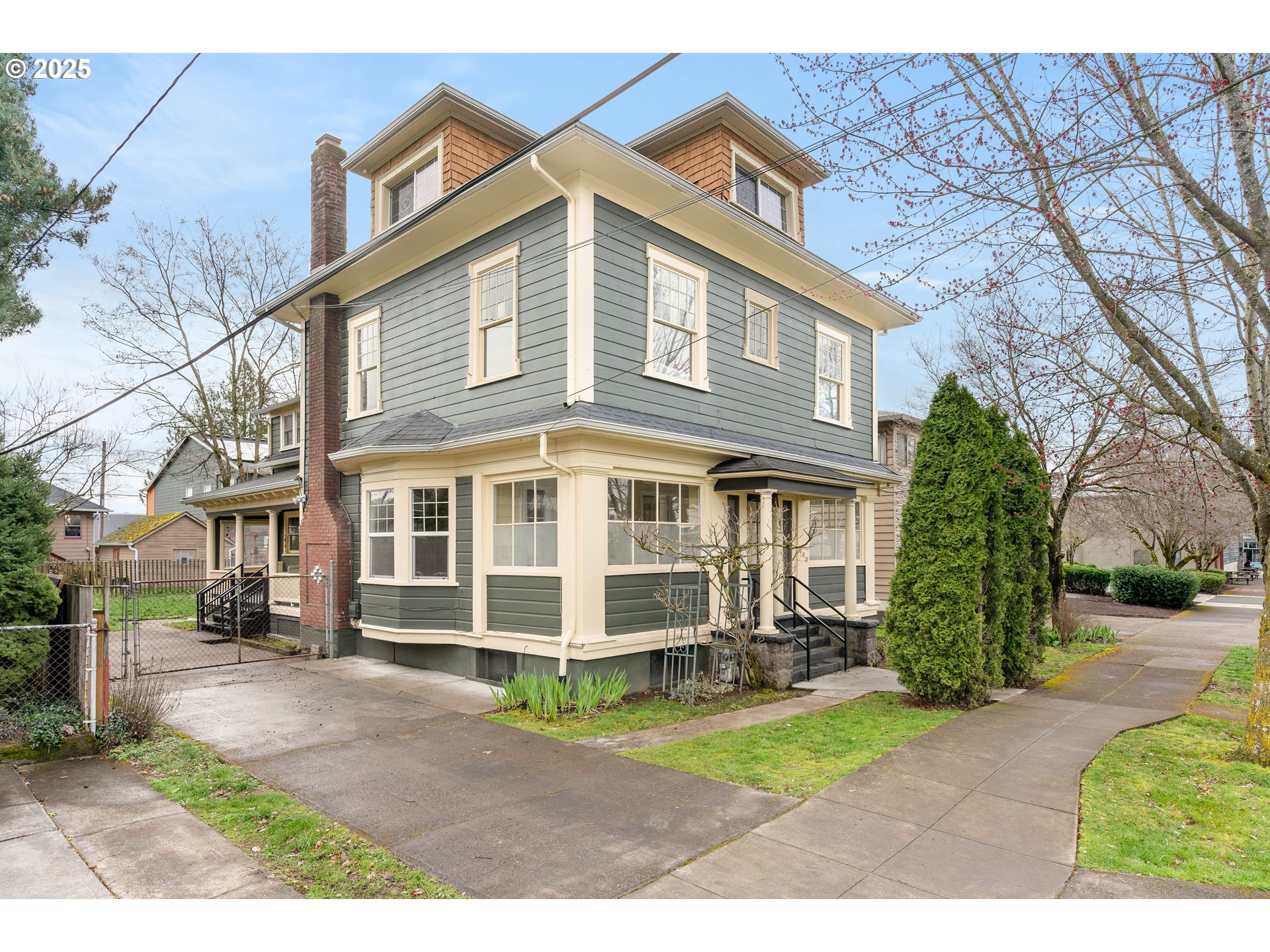Photo Courtesy of Brian Libby (CC)
The Pacific Northwest was a veritable hotbed of midcentury design in the 20th century. Architects, sculptors and artists alike left their mark not only on the region but on the world of design. And you may not know it, but you’ve been passing some of these landmarks on your daily commute. You may have walked inside masterpieces of midcentury design several times without grasping the history around you. Luckily in Portland, we have a dedicated community of conservationists and historians who keep these sites available for the public to see and enjoy. Read on to take a tour of Portland from a slightly different angle.
1. Keller Fountain
Originally named Forecourt Fountain or Auditorium Forecourt, Ira Keller Fountain is nestled in a city park in Downtown Portland, right across from Keller Auditorium. The design of the park and fountain was commissioned to Lawrence Halprin & Associates, with artistic conception headed by Angela Danadjieva. She drew the inspiration for the fountain from a book of waterfalls of the Columbia River Gorge.
The construction of the fountain came during a tense time in Portland history. In a 2003 article in the Oregonian, Randy Gragg immortalizes the moment as such:
“[T]he fountain’s 1970 unveiling became a local legend. Held in the edgy days following a violent clash between Portland police and antiwar protesters, the dedication took on the mood of a Wild West drama as city officials gathered for speeches at the foot of the fountain and hundreds of youths assembled at the top. When the spigots released the fountain’s 13,000-gallon-a-minute flow, however, any tensions quickly dissolved. While the officials politely applauded, the youths jumped into the rallying cries of “Right on!” “These very straight people have somehow grasped what cities can be all about,” Halprin said, turning from dignitaries to revelers to emphasize the democratic spirit underlying his design. “As you play in this garden, please try to remember that we are all in this together”. (Wikipedia, Keller Fountain)
The Keller Fountain is built reinforced concrete and contains 280,000 liters of water. A pump that propels the water cascades moves 49,000 liters per minute on them. The surface offers many places to sit and relax, without losing sight of the attractiveness of the source fully only under the shade of trees or large concrete slabs. In 2001, the Lawrence Halprin Landscapes Conservancy was formed to preserve and safeguard Halprin’s Portland legacy. The Portland Open Space Sequence was listed in the National Register of Historic Places in March 2013.
You can visit the Keller Fountain at: SW 3rd Ave &, SW Clay St, Portland, OR 97201
2. Merrill’s Veterans Memorial Coliseum
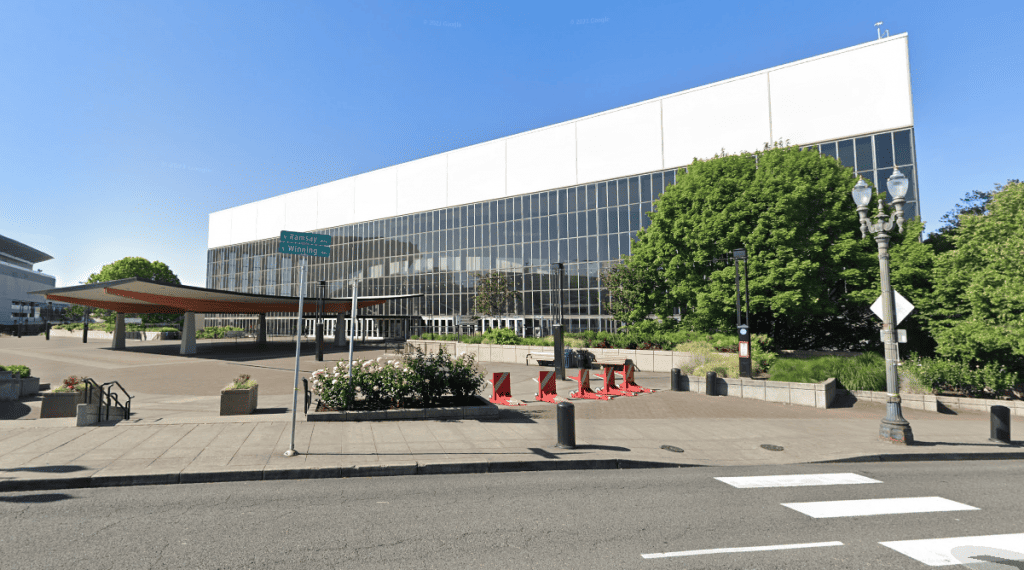
Map data ©2023 Google / Veteran’s Memorial Coliseum Portland Oregon
If you’ve lived in Portland long enough, it’s likely you’ve attended a friend or family member’s graduation, a Winterhawks game or maybe even a Portland Trail Blazers game in this building. Designed by Skidmore, Owings & Merrill, Veterans Memorial Coliseum is a 12,000-seat arena on the east bank of the Willamette River in Portland, opened in 1960 and dedicated as a memorial to veterans from all wars. It’s considered one of the finest International-Style civic buildings in the West and today, the National Trust for Historic Preservation has designated the Coliseum a National Treasure.
The design team was led by Myron Goldsmith a student of Mies van der Rohe and architect of the McMath-Pierce Solar Telescope, and design firm Skidmore, Owings & Merrill (SOM). The Coliseum used a grid of reinforced concrete columns and cantilevered steel trusses to form a square building, 360 feet wide on each side. Unlike most arenas, SOM wrapped the building in modular 3.5-foot by 9-foot glass panels, flooding the interior with natural light.
Veterans Memorial Coliseum was the city’s largest indoor arena until the Rose Garden (now Moda Center) was constructed next door in 1995. The building hosted countless concerts and events, including a concert by The Beatles in 1965, and the NCAA basketball Final Four championship in 1965. The Veterans Memorial Coliseum currently hosts over 150 events per year and has recently hosted major international events, such as the 2007 Davis Cup and President Obama’s first campaign rally in Portland.
3. Frank E. Beach Memorial Fountain, International Rose Test Garden
The Frank E. Beach Memorial Fountain, officially called “Water Sculpture”, is located in Washington’s Park’s International Rose Test Garden. If you’ve ever walked through the garden in the spring or summertime, when the roses are in full bloom, then you’ve most definitely walked under this mid-century work. It is an outdoor walk-through stainless-steel fountain that is installed in the garden’s upper level. It measures 12 feet (3.7 m) x 15 feet (4.6 m) x 12 feet (3.7 m). It consists of three vertical posts that support two horizontal posts, with two smaller vertical posts that stand by themselves.
The fountain was created and built by Oregon artist Lee Kelly and architect James Howell, with additional assistance from an architectural firm James M. Howell and Associates. It was made in memory of Frank E. Beach, who nicknamed Portland the “Rose City”, and first suggested the idea of having an annual Rose Festival in the city. Both these statements are on the inscription that accompanies the sculpture. It was constructed from 1974–1975, and as a gift, in honor of their father, was dedicated to the Beach family in June 1975.
It’s a beloved piece of history that has been included in published walking tours of Portland and garden tours of the Pacific Northwest. As said by Kathleen McCormack in her book “The Garden Lover’s Guide to the West”, the fountain “provides cooling water music for hot summer days in the garden“. So, next time you are in the area, be sure to stop by and listen for yourself.
4. Watzek House
In 1935, lumber baron and civic patron Aubrey Watzek wished to build a house for himself and his mom. He tasked his friend, 26-year old architect, John Yeon with finding a suitable site and creating a design. The result, the Watzek House, became an icon for bold, new regional interpretations of the Modernist movement and is still considered the most important modern residence in Oregon after a picture of the house was published by the Museum of Modern Art in New York in Art in Our Time in 1939.
The first constructions of the house started in 1937. The house offers views to the north, east, and south including a view to Mount Hood. Settled on the crest of a hill, the one-story building is rooted to its site by low stone walls, a terrace, and plantings that connect it to the surrounding wooded areas. The use of wood as the primary building material represented a choice to accommodate the climate, the existing site, and the region’s history. The Watzek house was placed on the National Register of Historic Places in 1974 and it was designated a National Historic Landmark by the National Park Service and the Secretary of the Interior in July 2011.
Every year, the John Yeon Center for Architecture and the Landscape, current steward of the Watzek House, opens up a limited number of tours to the public. While this spring’s tours have just recently sold out, you can keep tabs on upcoming tours here.
Conclusion
Oregon has been home to creators that have not only transformed the face of the Northwest but have made lasting contributions to the field of design across the world. The remarkable thing about architecture and sculpture is it’s lasting design, meaning that we will get to enjoy the work of the last century for decades to come.
There is plenty more to learn about in regards to design in Portland. You can start by learning about some of the biggest names and movements in the Northwest (some mentioned above) on our Modern Homes Blog. Check out a few below:
Feature: Lee Kelly, Local Sculptural Icon
John Storrs and the Face of Portland
Lawrence Halprin, A Revolutionary in Landscape Architecture
Peek Inside the Homes of America’s Greatest Midcentury Architects (Pietro Belluschi)

